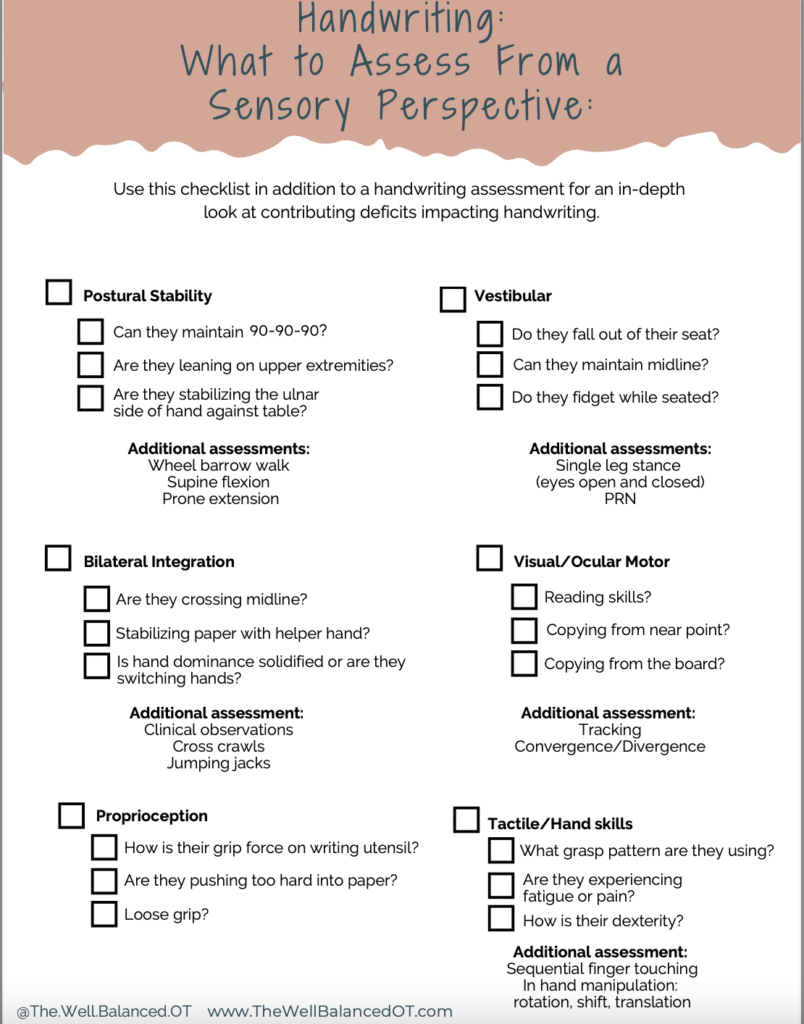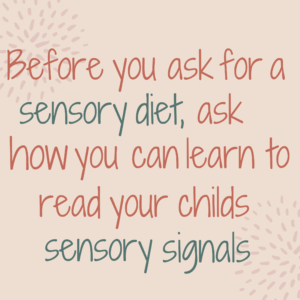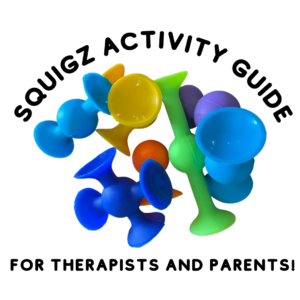Flexible (also alternative or adaptive) seating options in schools have become a hot topic and for good reason. Seating matters. Long ago are the days where classrooms are filled with 28 chairs pushed into each desk. Today, there are multiple options to support postural stability, help children focus, and promote optimal arousal level but if used incorrectly they can negatively impact a child’s success.
First, lets talk about the rules when using flexible seating:
- Alternative seating is a tool, not a toy.
- Seating is not a reward for good behavior.
- The student decides if they use it.
- A child’s opinion matters.
- One size does not fit all.
Alternative Seating: Stability before Mobility
Postural stability is the first and most important thing to address when thinking about alternative seating options. Postural stability is how strong and stable our core, back, chest, and shoulder girdle is as a unit (also referred to as our trunk). It is what enables us to sit up without leaning on anything around us. It is what allows us to have precision with fine motor movements. Without postural stability our handwriting becomes messy and our attention can plummet.
Signs of Postural Instability:
- Resting head in hand while seated at desk
- Leaning on their desk
- Fidgets at their desk
- Leans on their upper extremities while seated on the floor
- Feet are on chair and legs are resting against chest to support the trunk while seated
- Difficulty sitting criss-cross Applesauce on the floor
- Lays down during floortime
- Might lean on friends when seated close to each other
- Writing using whole arm movements (after 6 years old)
- Poor fine motor skills
- W-sits
- May appear floppy, weak or uncoordinated
When a child is weak, we want to avoid putting them on a seat that moves, wiggles, jiggles or bounces. Think about it. How much stability do you have riding a bike? Standing on a tightrope? Sitting on an air mattress? Not a ton. Your body works extra hard in these situations, especially those that have poor postural stability. When seated on a yoga ball or sit-fit, they will fatigue even faster because their muscles aren’t strong enough to stabilize their body for an extended period of time on a moving surface. This can lead to falling off the seat, an increase in dysregulation, and a decline in work production.
When you see a child fidgeting in their seat or slumped over on their desk you might immediately think they need an alternative seat, “They must be tired” or “They are moving all the time, let’s just give them a seat that moves”. While in some situations, flexible seating options are warranted, we just learned these are also signs of postural instability. Without taking the time to really understand the meaning behind the behavior, we might wrongly pair an alternative seat to a child and actually create more problems. A child who fidgets in their seat might need vestibular input (movement) but it also might occur because it is easier for a body to move around than engage and maintain the muscle co-contraction that is required to remain upright.
A child with poor postural stability benefits from more support:
- A high back chair
- A chair during carpet time
- A chair with arm rests
- Feet grounded and flat on the floor
- A stable base of support (typically flat and sturdy under their bottom)
- A wedge seat (an air or foam wedge with a flat bottom. The child sits on it to promote a neutral pelvic tilt rather than a posterior one)
- Sitting against a wall or with their back against an object on the floor
- Proper alignment: 90 degree flexion at hips, knees and ankles while seated
- A foot rest if their feet don’t reach the floor
Providing the above additional support sets them up for success. Their trunk is now stabilized enabling them to be more successful with fine motor tasks like writing, feeding, and threading beads. They no longer need to use one of their hands/arms to support their body and head and can now use both hands in play. Their back is no longer rounded and their head is no longer resting on the desk, they are able to engage with the world around them and visually attend to others. Since their brain is no longer so focused on what their body is doing, they are able to focus more cognitive power on what they are learning.
The problem with most alternative seats are that they often do not provide the stability these children need. Some are filled with air and most have a very small base of support.
Flexible Seating Options include:
- Yoga Ball
- Wiggle cushion or Sit Fit
- Wobble Stool
- T-Stool
I see people all over the internet and in schools suggesting these types of adaptations for children to promote postural stability and it drives me crazy! Using a seating option from above to strengthen and engage the muscles may be beneficial in small, quick bursts done by a trained Occupational Therapist who knows the signs of fatigue and dysregulation but they should never be suggested to a teacher who is going to place the child in this seat then walk away. That does not set the child up for success.
Adapted Seating to improve Attention and Focus
For those children that do not struggle with limitations in postural stability, alternative seating can be a powerful tool to help with attention in the classroom. I do want to be clear though, this is an in-the-moment strategy. Regulation strategies should be utilized throughout the day for good attention and engagement. I recently wrote An OT’s Guide to Regulation in the School to help teachers better understand regulation, identify the beginning signs of dysregulation, and properly pair the correct tools.
If you have a child that appears sluggish, tired, or has flat affect, some vestibular input may help them become a little more alive. Our vestibular system is located in our inner ear and in charge of all things related to balance. As we are sitting on a seat that moves our vestibular system is activated, increasing our arousal level to that just right state.
If you have a child that likes to fidget or shuffles in their seat a little bit, seating like a yoga ball or a wobble seat might work well. These children typically can maintain control while seated and it might provide them with just enough feedback and stimulation to increase focus and attention.
If you have a child that is impulsive, has really big movements, and has poor safety awareness most of the above seating options listed will not be appropriate. Imagine putting an impulsive child on a yoga ball. That ball is going to end up everywhere but under the child. The child with poor safety awareness might fall off or get so excited they start bouncing manically. These children need proprioceptive input, not vestibular!
Learn more about the signs of dysregulation in this blog post!
What’s Next?
Once you’ve introduced alternative seating you want to check back in with that child to see how they feel after using it. You also want to spend some time observing the child.
Questions to ask the child:
- How did your body feel when you used this chair?
- Do you think your brain had an easier time learning?
- Do you want to use it again?
Questions to ask yourself:
- Do you notice a difference in behaviors?
- Is the child able to attend to their surroundings?
- Are their feet on the ground?
- Are they falling off the chair?
- It it becoming a toy or distraction?
How do I Know What Type of Input a Child Needs?
If you work in the school system, you’ll want to check this out!
I created An OT’s Guide to Regulation in the Classroom to support teachers, mental health staff, therapists, and other OTs. A student can not learn if they are dysregulated and you can’t teach if there are disruptions occurring throughout your lessons or therapy sessions. This guide begins by teaching school staff how to identify when and why a student is dysregulated and how to suggest specific regulation strategies and tools to support an optimal state for learning.
This 30+ page, no fluff guide is written by an Occupational Therapist. We are experts in regulation, sensory processing, and looking at the whole child. That means looking at multiple factors to help you decide the perfect tool for your students.
What’s included:
- Commonly used definitions
- 36 links to preferred regulation tools to use in the school
- Education on low and high arousal behaviors to understand beginning signs of dysregulation
- Alerting and calming activities to facilitate a just right state
- Components that can impact regulation
- Our 8 sensory systems broken down into observable behaviors to help us identify its impact on regulation
- Strategies for modifying the environment and organizing a students personal space
- A look at adapted seating (when and how to use it)
- Appropriate regulation tools (with links) for the classroom vs. Individual setting
- Education on oral tools and regulation garments,
- When and how to utilize heavy work and breath work
Putting it all together:
- How to teach the child how to utilize the strategies
- Quick Reference Decision Making Guide
Recommend Resources:











